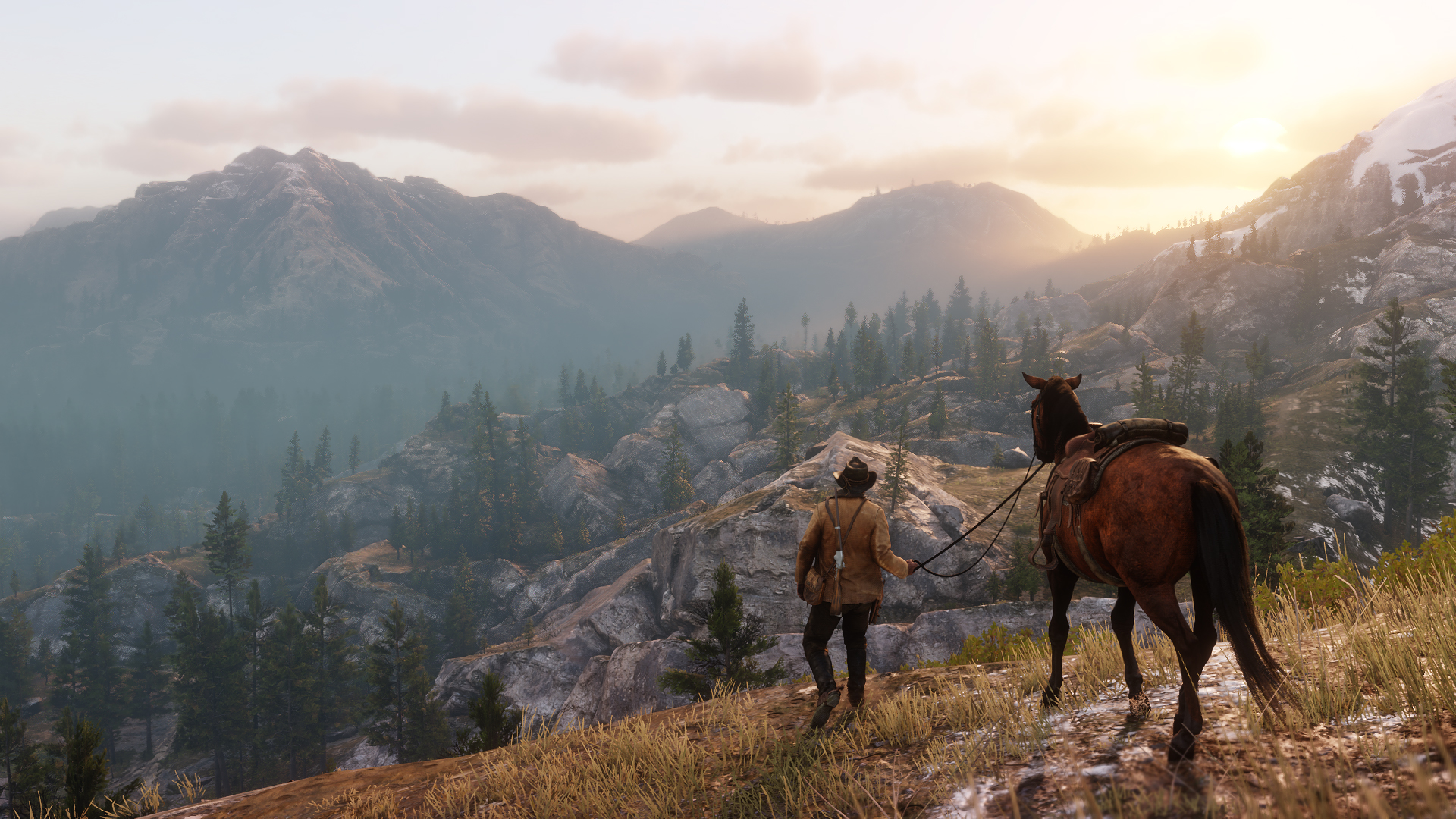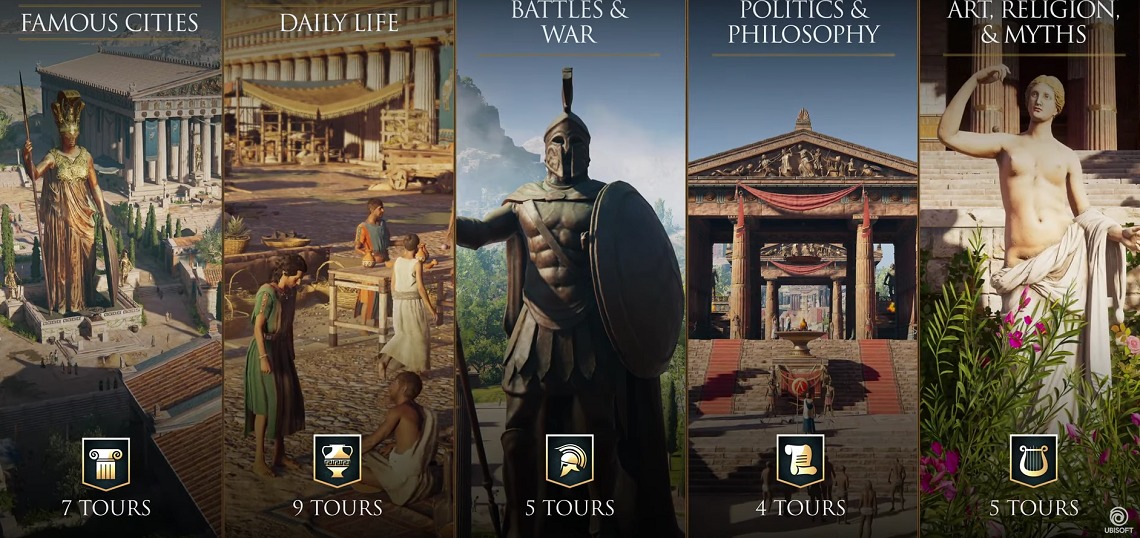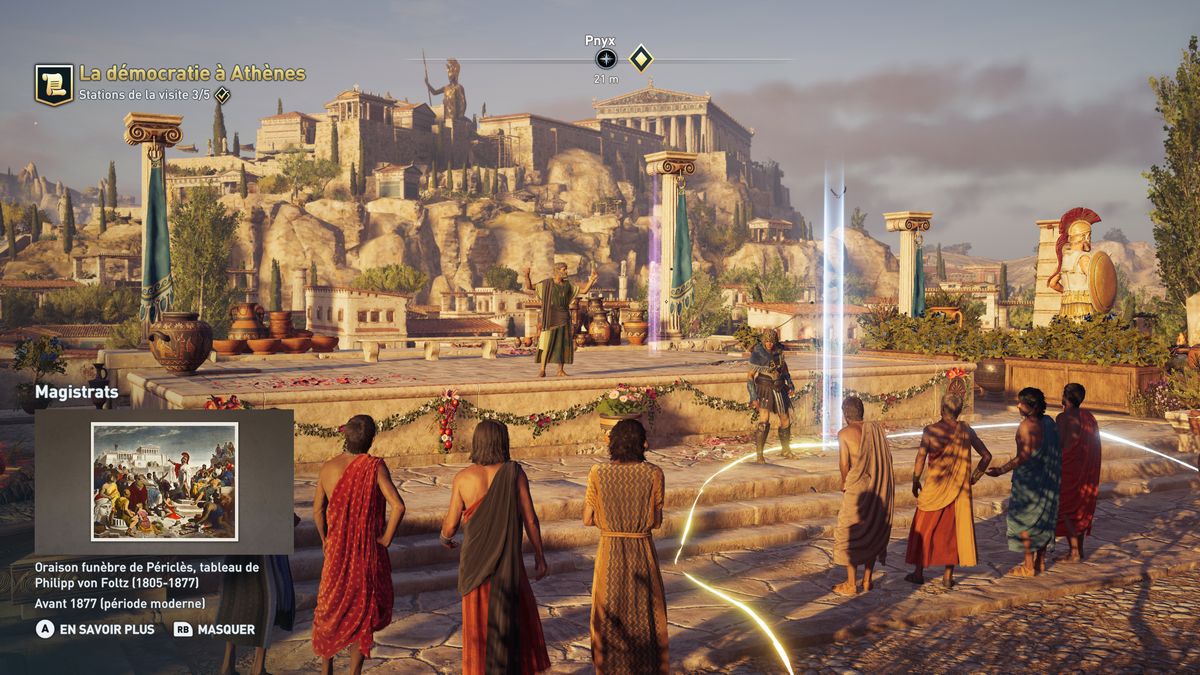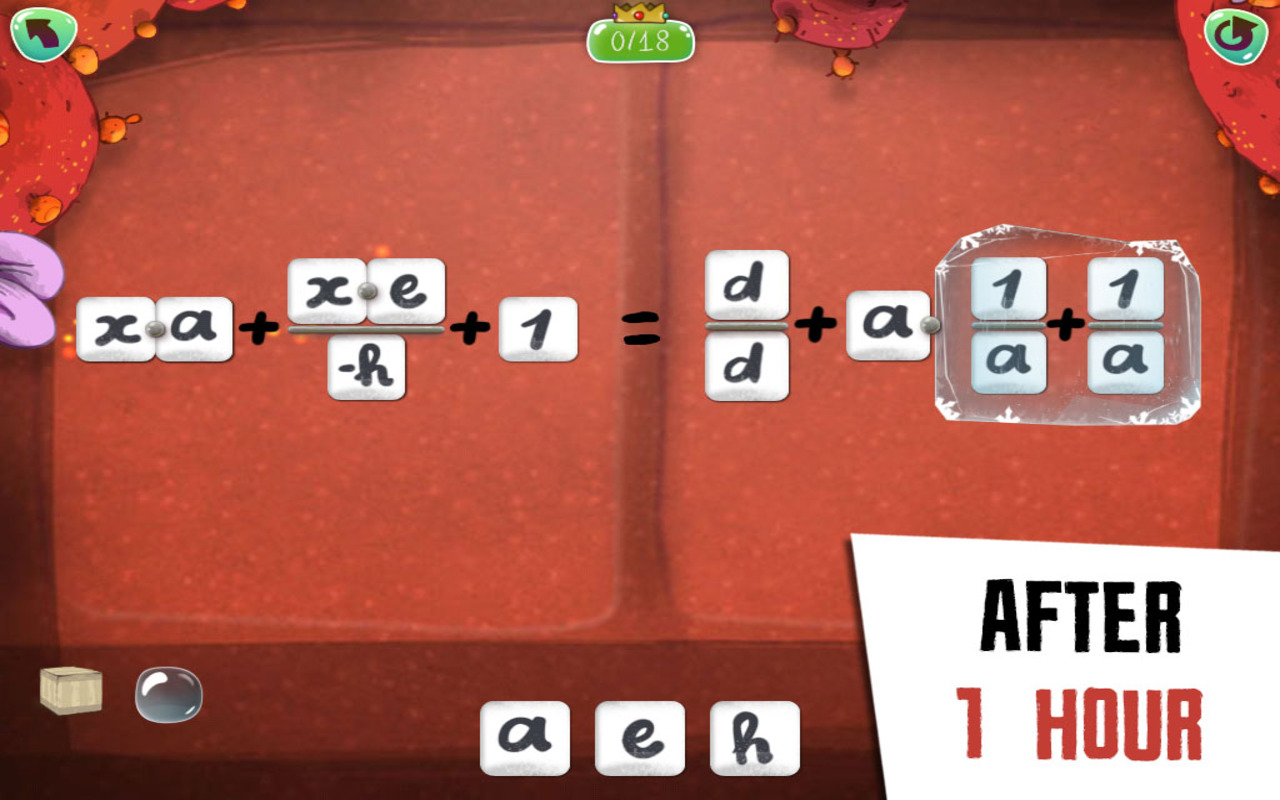
3 Ways Video Games Can Teach
2023-02-10
CRISPR: What is it good for?
2023-02-10Do video games teach better than school?

Imagine the perfect learning experience, where you actually don’t have to go to school. I mean who needs a school anyways? Who needs to wake up at 6am for a 2 hour commute in public transportation, to then be in an overcrowded classroom, where you can’t focus because Timmy decided to make a ruckus again.
Play Curious Goes to School
Imagine this- You wake up at 7:59am and put on your VR Headset and log into history class which starts at 8:00am. The teacher explains that you’ll be going through Assassin’s Creed: Discovery Tour in your virtual sandbox experience where you see 3D models of your friends standing next to you.
As you walk through Ancient Greece, different interfaces pop up on your personal screen, giving you subtext and explanations of the different artifacts you see laid out before, like amphorae and murals, all the while hearing the history of the Greek empire.

The bell rings in your earphones, and you are virtually transported to your math class, where today you will be playing Dragonbox: Algebra, where you see cute dragons and monsters dancing around, and transforming into numbers and equations; did you remember to complete levels 3 and 4 last night? Well, it’s too late now, might as well be immersed in this masterfully crafted class, finally making sense of what that pesky X is.

Ever heard of Minecraft, the game which puts the player's imaginations to the test as they build any kind of structures they want out of cubes? Well, Minecraft is also a fantastic teaching tool which you’re going to be using to learn Chemistry! But how you might ask?
Minecraft Education Edition has four new game elements which are not in normal Minecraft that offer innovative ways for students to combine and reduce materials, which represent chemical elements and physical matter.
Here you’ll be using the Element Constructor that allows you to create elements based on their atomic structure with sliders to choose the number of protons, neutrons and electrons. By using the Element Constructor, you’ll be able to create 118 elements from the Periodic Table as well as over 400 stable isotopes!

What about teachers?
Does this sound like the best school experience ever? Or more like a dystopia where all of life is now mediated by machines? Can games really be the sole source of educational support a child has when learning a subject?
Probably not. Scot Osterweil, former director of MIT’s Education Arcade, affirms that games can only be effective teaching tools when they are combined with other hands-on, exploratory activities and continuous instructions from an educator who serves more as a mentor than a lecturer. Not only that, but video games are also a useful tool to break the monotony of school and also permit teachers to make students feel more engaged in what they are learning.
To get a grip on how this kind of blended learning experience can work, let's put my imaginary school behind us, and take a look at a real high-school that is dedicated to learning through games...
What about The Epic Quest To Learn?
The answer can be found at the school “Quest to Learn (Q2L)”, where teachers have been creating their lessons based on the concepts of game design since 2009. Their programs emphasize solving complex problems with a wide range of potential answers, allowing students to investigate many solutions by making decisions along the way, increasing their creativity and problem solving skills.

“I like going to Quest because we have more freedom in the way we work. We don’t just fill out math sheets. We learn different strategies for solving problems and can do it our own way.”
Sydney Railla, 6th grade student
So that their classes evolve with feedback from students and their own assessment of their classes, every trimester Quest to Learn educators form groups with specialized game designers as well as curriculum designers. With them, they make classes which are compliant with the New York State standards in addition to being pertinent to the daily lives of their students. Through tracking their students' performance, they regularly make games which improve specific areas, concentrating on subjects where their students performed less well previously.
Moreover, students at Quest to Learn also study game design with Gamestar Mechanic. This tool creates a feedback loop, rewarding students for successfully completing classes by giving them assets and characters to put in their own custom games during their game design classes, which are taught by the same people who make their games and who have actual industry experience!
Sure, but **does this kind of alternative learning actually work?** Or does it just get kids addicted to their gamepads?
Research studying Quest To Learn and game based learning shows that **if an educational video game is well designed, it can create a solid foundation for learning, improving retention, interest, and test performance even on complex subjects. Going as far as improving systems thinking skills, time management and teamwork skills as well.
Through this meticulous design, students are performing above and beyond other students in the region, having higher averages than their peers on standardized tests. In fact, students of Quest to Learn have shown to have statistically significant gains in systems thinking skills. And their Math Team has won the New York Math Olympiad multiple times, which has been attributed to their superior training in collaborative problem solving.
Also, schools which include video games and manipulation of computers and other technological tools will most likely increase student’s digital literacy and how these tools work. Which is fundamental nowadays as many students will pursue jobs which require good knowledge of technology and digital media.
“Gamification”, or school as a game
Another way to bring the benefits of games to school is to structure school itself as a game. Lee Sheldon, game writer and teacher, was inspired by MMORPGs like World of Warcraft to transform his entire university-level class into a role playing game. In his class, students are separated into guilds that need to work together to beat the “bosses” (aka the final exam).

As the class progresses through the year, students have quests and missions to accomplish, slowly gaining experience points for themselves and for their guild. As they complete missions and reach higher levels, Lee rewards his students with vouchers, games, and photos to put in the hall of fame. This is a really fun way to engage students, and give students a goal to work towards!
In The Multiplayer Classroom (2020), the field guide to the guild design by Lee Sheldon incorporates testimonials from different schools who have used his methods through case studies. A large sentiment is that one of the most pronounced differences from the addition of the guild design is the increased attendance of students and their grades. Another marked difference is that students are coming to see teachers to make up missed work on their own volition, because they don’t want to penalize their guilds.
This is an example of “gamification” put to positive ends, where game-like elements have been introduced into a non-game setting, in order to motivate and encourage the students.
So, if games are so great for school, why doesn’t every school use them?
Limitations
Well, for one thing, there aren’t necessarily games for every subject. In literature class, for example, it’s hard to imagine a game which would work. After all, the most effective way to receive good grades is probably to read the book!
But teaching isn’t just about the content, it’s also about the activities that engage the students in the content, and help them relate to it. For example, when I was studying Shakespeare in school, the teacher assigned us role-plays where we would have to play a particular character and read out each scene in class. This helped us heighten our involvement in the play and was usually followed by discussions on the scene we had just read.
With this example as a guide, maybe we could invent role playing games or video games made specifically for each book that is read? The games would complement the student’s reading of a scene, without replacing the need to read in the first place.
Conclusion - games are the future!
Even with these limitations, we truly believe that games are the future of learning, and look forward to seeing the new ways in which games, whether they are video games, through roleplay or pen and paper, will innovate to teach students across the world! After all, scientists and educators around the world are enthusiastic about the effects of using games for learning.
If you enjoyed this article and want to read more analyses of technology, education or video game developments, don’t forget to follow us on LinkedIn, Facebook, Twitter or Instagram or join our mailing list!
-Written by Raphaël & edited by Jesse




